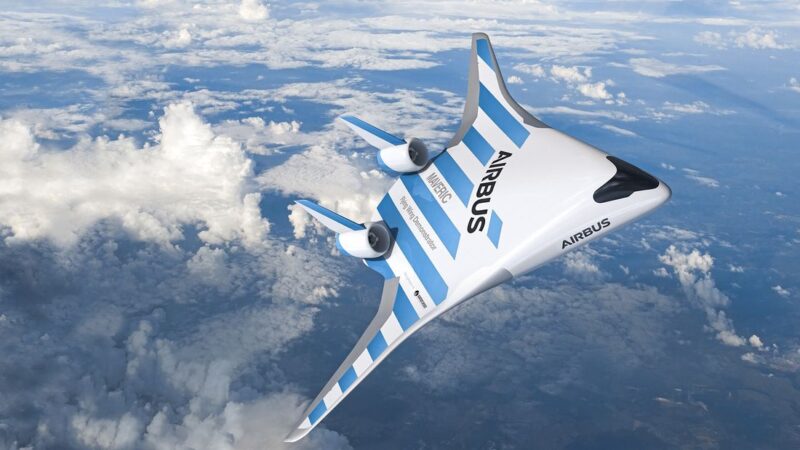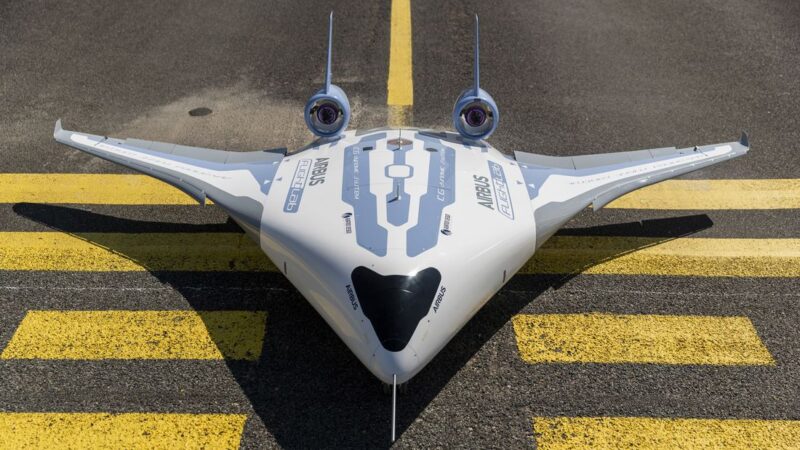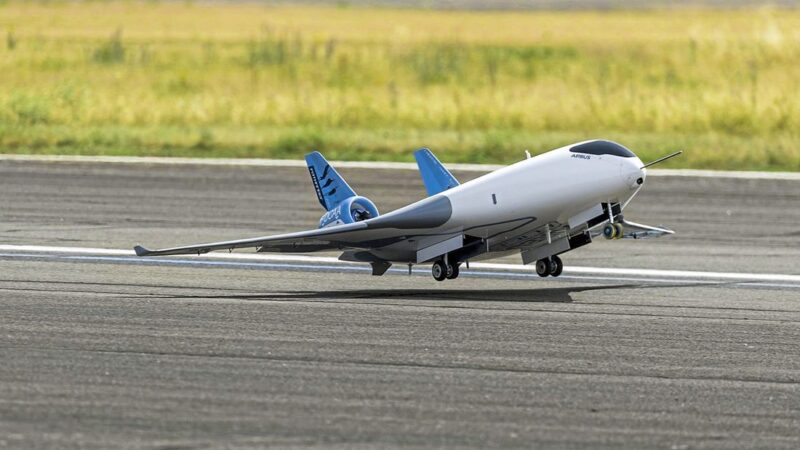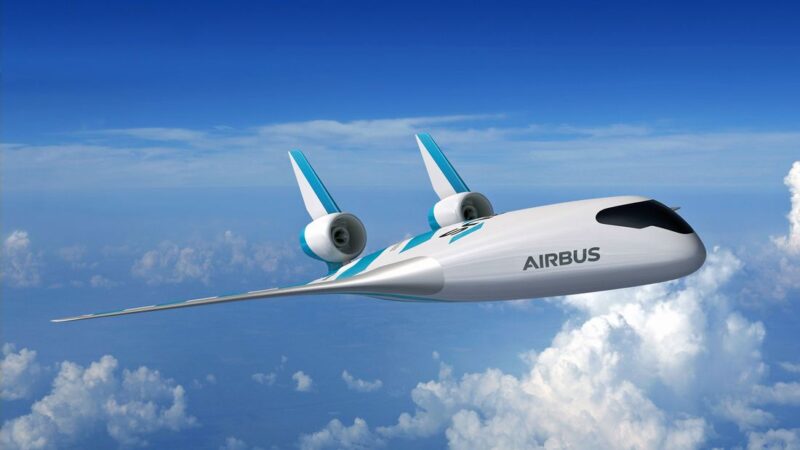Why Airbus is also studying flying wings bodies
Alternative aircraft concepts seem to be the trend: in Russia, the model of a mixed or flying wings body (BWB) is currently being tested in a wind tunnel. Airbus also presented a BWB model in February. What does the airliner of the future look like?
Two meters long, 3.2 meters wide and powered by two miniature airplane turbines framed in nacelles: compared to its Airbus siblings, Maveric (Model Aircraft for Validation and Experimentation of Robust Innovative Controls) is still a little baby. But from a European aircraft manufacturer’s point of view, it might be worth the try.
Combination of flying wings and wide fuselage
The Blended Wing Body (BWB), a combination of a flying wing and wide fuselage, has the potential to save up to 20% in fuel compared to a current standard fuselage aircraft, according to Airbus. The reason is the extra lift created by the aerodynamically shaped hull. In addition, the design could allow new drives (hybrid or fully electric) and their integration.
First flight in June 2019
Work on Maveric has continued since 2017, the first flight took place in June 2019 in an unknown location in central France. They want to test Maveric in flight until around the middle of the year. “By testing alternative aircraft configurations, Airbus can assess their potential as viable future products,” said Jean-Brice Dumont, executive vice president of engineering at Airbus. However, there is no specific decision or timeline for commissioning a BWB.
Two decades of research
However, the idea of BWB is not that drastically new. In the late 1990s, before the Boeing takeover, McDonnell Douglas was working on an aircraft with a fuselage that blends seamlessly into the wings. Boeing continued development with NASA and tested two models under the X-48 designation until 2013. Lockheed Martin worked on a BWB variant with a T-tail that could one day be used as a military transporter. And in Russia, they are also working on a BWB airliner. Wind tunnel tests are currently underway with a model in Zhukovsky. But the BWB has so far not moved beyond the unmanned models stage.
Improved flight control and computing capacity
Why is Airbus trying again now? Advances in technology have made the concept attractive in the near to medium future, according to Dumont, says a media report. These include a lightweight construction with carbon fiber composites as well as improved flight control and calculation capabilities. However, the question of how the windowless cabin of a BWB passenger can be made acceptable remains unresolved.
The advantages of an airplane without windows
They are mainly economical. The drag is increased by windows, not because polycarbonate drags more than aluminum, but because window borders create much more drag than a smooth aluminum surface. In addition, the construction of windows in the cabin is expensive. Thus, an airline would save considerably by equipping its planes with cameras that project what can be seen outside onto monitors, both when purchasing its planes and during their operation. They would have faster and lighter planes, with better fuel economy.






